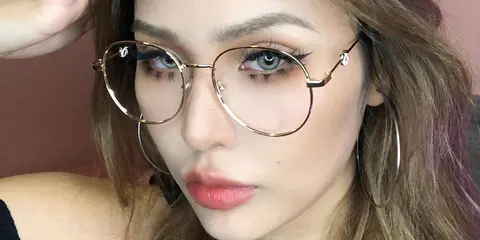Unlock the Secret to Perfect Reading Glasses: What You Must Know!
Reading glasses are more than just a tool; they are a gateway to clearer vision and enhanced comfort while reading. As we age, many of us experience vision changes, making it challenging to enjoy our favorite books, articles, or even menus. The prevalence of vision issues like presbyopia affects millions, particularly those over the age of 40. However, regardless of age, understanding how to choose the right reading glasses can significantly impact your reading experience. This article aims to guide you through the essential factors to consider when selecting the best reading glasses tailored to your needs.

Understanding Your Vision Needs
Before diving into the world of reading glasses, it’s crucial to understand the common vision issues that may necessitate their use. One of the most frequent conditions is presbyopia, a natural part of aging where the eye's lens loses elasticity, making it difficult to focus on close objects. Other issues may include astigmatism or nearsightedness, which can also affect your reading capabilities. Knowing your specific vision needs is essential in selecting the right pair of glasses. For instance, a friend of mine, who always loved reading novels, found herself squinting at the pages. After a quick visit to her eye doctor, she learned she had early signs of presbyopia. Understanding this helped her choose the perfect pair of reading glasses, allowing her to enjoy her favorite pastime again without discomfort.
Lens Types and Their Benefits
When it comes to reading glasses, the type of lens you choose can make a world of difference. The most common options are single vision, bifocals, and progressive lenses. Single vision lenses are designed for one specific focal length, making them perfect for straightforward reading tasks. Bifocals, on the other hand, contain two different optical powers—one for distance and one for close-up vision—ideal for those who need versatility. Progressive lenses offer a seamless transition between multiple vision zones, allowing for a more natural experience when looking at different distances. However, they may take some time to get used to if you're new to glasses. My uncle recently switched to progressive lenses after years of using bifocals, and he noted how much smoother his reading experience became, especially when switching between his book and the television.
Frame Styles and Materials
The frame you choose is just as important as the lenses themselves. There are several frame styles available, including full-rim, semi-rimless, and rimless designs. Full-rim frames offer durability and a wide range of styles, while semi-rimless frames strike a balance between durability and a lighter feel. Rimless frames provide a minimalist look but may not be as sturdy. Additionally, the material of the frames can vary widely—plastic frames are lightweight and often more affordable, while metal frames are typically more durable and can provide a more sophisticated appearance. A friend of mine opted for a semi-rimless style because she wanted something that was both chic and comfortable. She loves how versatile they are, complementing both her casual and professional outfits.
Importance of Proper Fit
Finding the right fit for your reading glasses is crucial for both comfort and functionality. Glasses that are too tight can cause discomfort, while those that are too loose may slip down your nose, making it difficult to focus. To measure for the right size, consider the width of your face, the distance between your pupils, and the length of your temples. When trying on glasses, look for a comfortable fit that allows the lenses to align with your pupils properly. A well-fitting pair should feel secure without pinching or sliding off. It’s worth noting that my sister once purchased a pair of glasses online without trying them on first. While they looked great, they were too loose, leading her to constantly adjust them while reading. After that experience, she decided to visit a local store, where a professional helped her find the perfect fit.
Consulting with an Eye Care Professional
While gathering information on your own is helpful, consulting with an eye care professional is crucial for personalized recommendations. During an eye exam, the professional will assess your vision and discuss any specific needs you may have. Be prepared to communicate your reading habits, whether you read for long periods or prefer short bursts. This information can help the eye care provider suggest lenses and frames that best suit your lifestyle. For instance, my friend recently went in for an exam and was surprised by how much the eye doctor emphasized the importance of discussing her reading preferences. The recommendations she received made a significant difference in her comfort and enjoyment while reading.
Enhancing Your Reading Experience with the Right Glasses
Choosing the best reading glasses involves understanding your personal vision needs, selecting the right lens type, considering frame styles and materials, ensuring a proper fit, and consulting with an eye care professional. Each of these factors plays a vital role in enhancing your reading experience. Take your time to explore the options available to you, and remember that the right pair of reading glasses can transform not just your vision but also your enjoyment of reading. Embrace the journey toward clearer sight and rediscover the joy of reading!


